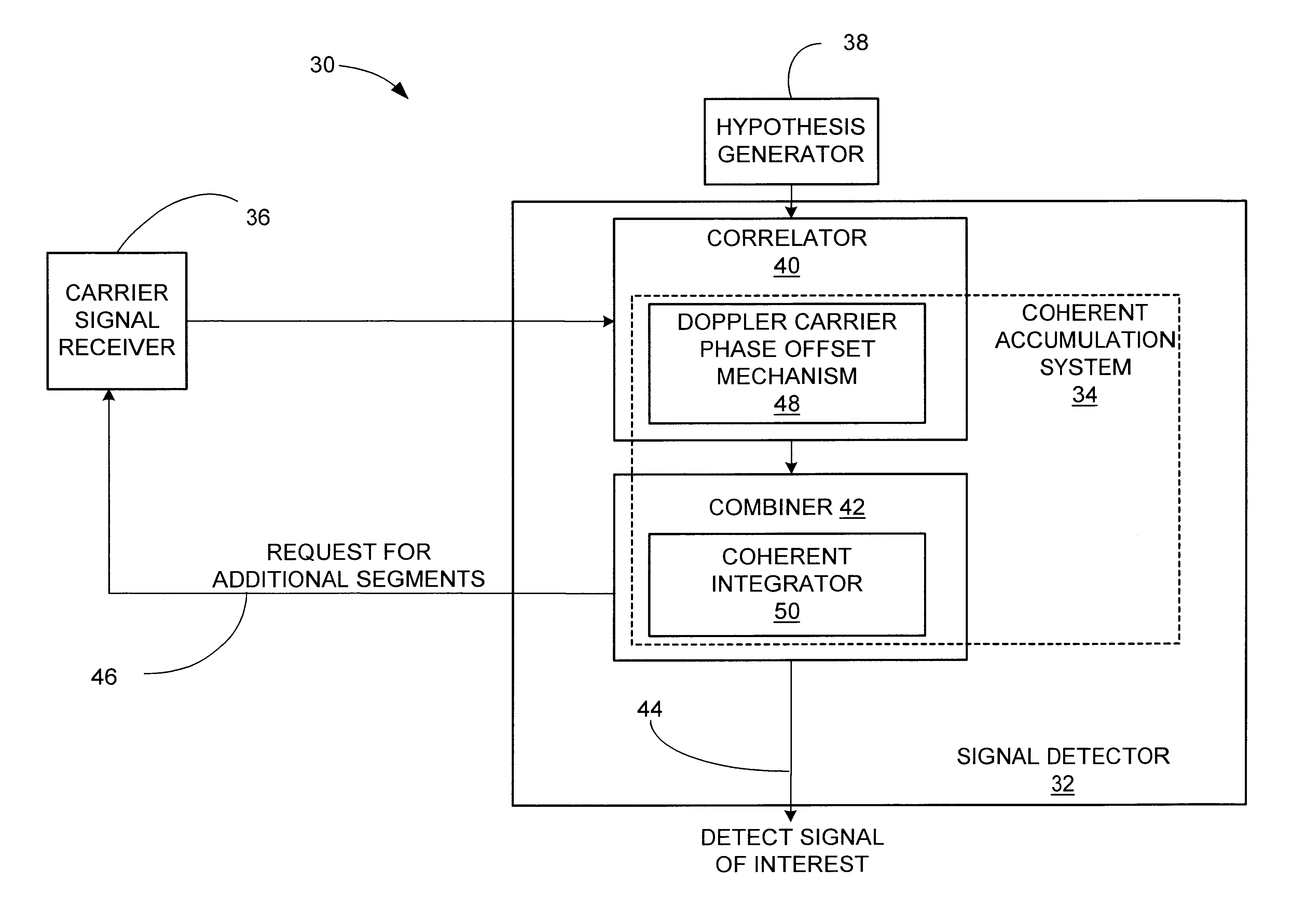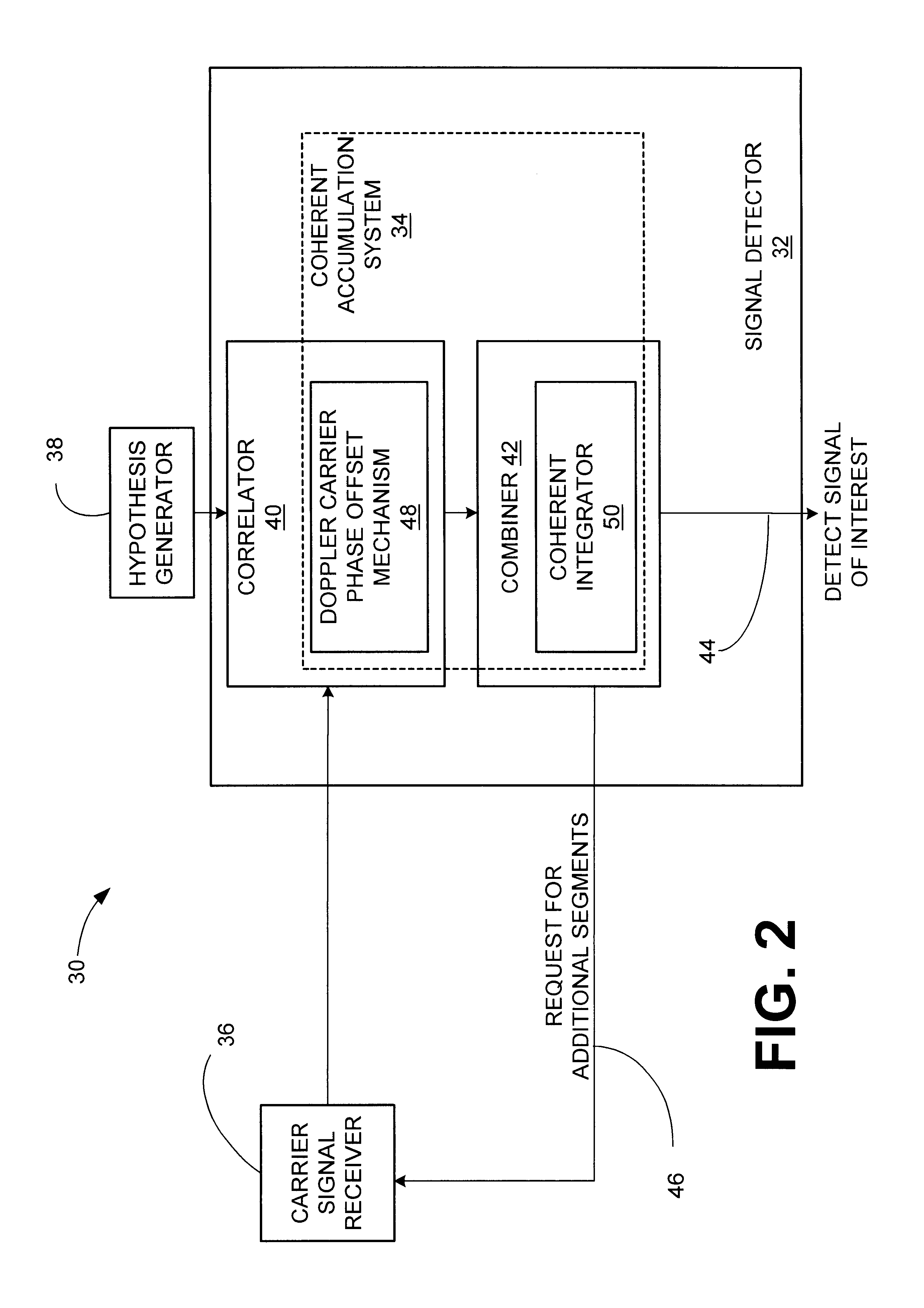Signal detector and method employing a coherent accumulation system to correlate non-uniform and disjoint sample segments
a signal detector and accumulation system technology, applied in direction finders using radio waves, navigation instruments, instruments, etc., can solve the problems of limiting the size and occurrence of the sampling period, the signal-to-noise ratio of the received signal b>20/b> over a finite sampling window may not be sufficient to detect the presence and range of satellites, and it is difficult to combine segments of samples captured over different periods of tim
- Summary
- Abstract
- Description
- Claims
- Application Information
AI Technical Summary
Benefits of technology
Problems solved by technology
Method used
Image
Examples
Embodiment Construction
A. Receiver Having A Signal Detector Employing The Doppler Phase Correction System
1. Architecture
A block diagram of a generalized embodiment (a nonlimiting implementation example) of a receiver 30 that employs a signal detector 32 having the coherent accumulation system 34 in accordance with the subject invention is illustrated in FIG. 2. As illustrated, the receiver 10 comprises a carrier signal receiver 36, for example but not limited to, a conventional radio frequency (RF) receiver, for receiving a carrier signal, continuously or intermittently, encoded with any type of data. Segments of the signal are acquired, and the segments of the signal may be of non-uniform-length and may be disjoint and separated by arbitrary periods of time. The signal may comprise a signal of interest perturbed by noise or pseudo-noise. As an example, in accordance with a spread spectrum modulated signal, the signal may comprise the combination of multiple signals of interest each encoded using one of a...
PUM
 Login to View More
Login to View More Abstract
Description
Claims
Application Information
 Login to View More
Login to View More - R&D
- Intellectual Property
- Life Sciences
- Materials
- Tech Scout
- Unparalleled Data Quality
- Higher Quality Content
- 60% Fewer Hallucinations
Browse by: Latest US Patents, China's latest patents, Technical Efficacy Thesaurus, Application Domain, Technology Topic, Popular Technical Reports.
© 2025 PatSnap. All rights reserved.Legal|Privacy policy|Modern Slavery Act Transparency Statement|Sitemap|About US| Contact US: help@patsnap.com



